Creating a Matcha Moment at Home
Taking a moment away from your busy daily life to quietly enjoy a cup of matcha can be a special experience. Creating such a “matcha moment” at home not only connects you with traditional Japanese culture but also provides mental healing. Even without a formal tea room, you can create a special moment with a few thoughtful touches. According to domestic research, the number of people enjoying matcha at home has increased by about 30% since the COVID-19 pandemic, and “home matcha time” is becoming established as a new lifestyle.
Creating a Japanese-Style Space That Reflects the Seasons
The most important aspect of creating a matcha experience is “creating the right space.” In the tea ceremony, following the spirit of “ichigo ichie” (one-time, one-meeting), seasonal elements are valued. Even designating a small Japanese corner in your living room can dramatically change the atmosphere.
- Add a single flower: Arrange a seasonal flower in a small vase for a simple decoration
- Refine the fragrance: Using subtle Japanese scents (like sandalwood) can enhance concentration
- Adjust the lighting: Create soft lighting with indirect illumination or lantern-style lights
“You don’t need to make all furniture and furnishings Japanese-style. Even just the top of one table is enough,” says modern tea master Chie Yamamoto. Even without tatami mats, simply arranging tea utensils on a table and placing a small furoshiki cloth or tea bowl mat can transform the space into a special “matcha space.”
Hospitality Techniques to Engage All Five Senses
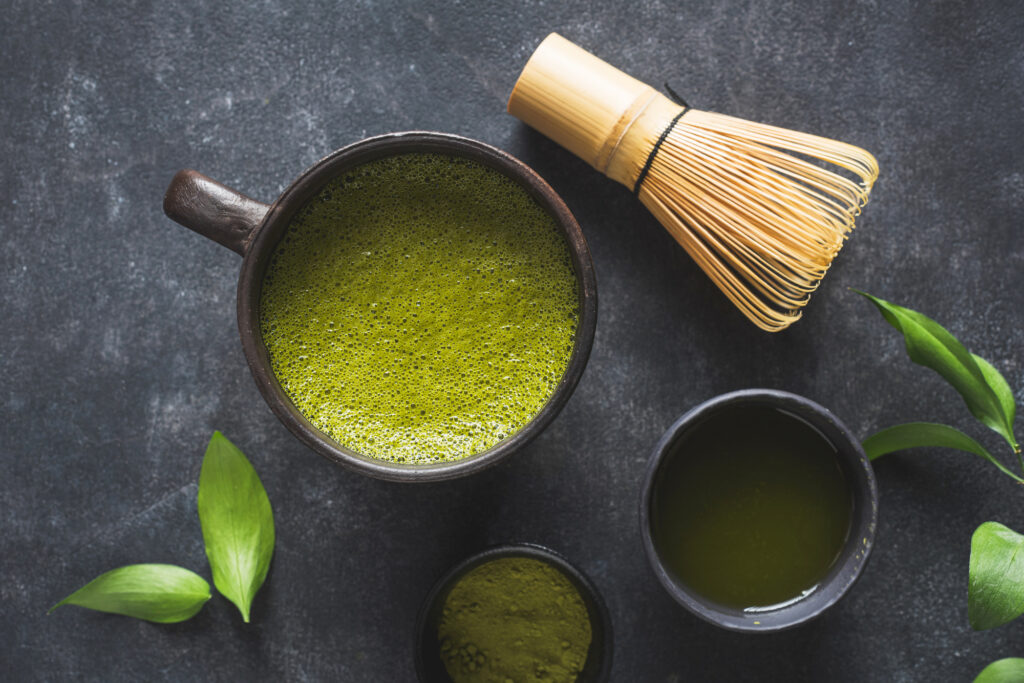
To make matcha time at home special, attention to the five senses is essential. Especially when “hosting,” thoughtful details that put guests at ease are key.
- Visual: Choose tea bowls and Japanese sweets that match the season (cherry blossom patterns in spring, autumn leaves in fall)
- Auditory: Play quiet Japanese music, or turn off electronics to listen to natural sounds
- Tactile: Be mindful of how you hold the tea bowl to feel its warmth
- Smell: Take time to enjoy the aroma of matcha
- Taste: Pay attention to water quality (soft water enhances matcha’s umami)
“Creating a boundary between daily life and special moments is the secret to deepening your enjoyment of matcha,” says Tea Master Suzuki, who has 40 years of tea ceremony experience. Put away your smartphone, don’t look at the clock. Your special matcha time begins with such small rituals.
Basic Utensils and Selection Tips for Enjoying Authentic Matcha at Home
Tea Utensil Basics — Balancing Functionality and Beauty
To enjoy authentic matcha time at home, selecting appropriate utensils is essential. Tea utensils are not merely practical items but important elements that enrich the “matcha moment” itself. Here are the basic utensils that even beginners can easily acquire.
First, a tea bowl is essential. Ideally, you would choose according to season and occasion, but for beginners, starting with one versatile bowl is recommended. Shallow bowls are typically used in summer and deeper bowls in winter, but beginners may find medium-depth bowls easier to handle. Focus on a weight that feels comfortable in your hand and ease of holding, making sure to actually hold it before purchasing.
Next, a tea whisk (chasen) is essential for whisking matcha. One with around 80 prongs is suitable for beginners as “practice grade.” Softening it with hot water before use enables fine, delicate foam.
Recommended Tea Utensil Sets by Budget
Here are tips for selecting utensils according to your budget:
Beginner Set (5,000-10,000 yen) • Ceramic tea bowl • Practice-grade tea whisk • Tea scoop (bamboo) • Tea cloth (linen or cotton) • Simple natsume or tea container
Intermediate Set (15,000-30,000 yen) • Seasonal tea bowls (spring/summer and fall/winter) • Fine-tine tea whisk (around 100 prongs) • Tea scoop (with inscription) • Natsume (wooden with lacquer) • Tea cloth (high-quality linen) • Whisk rest
According to recent surveys, about 65% of people who enjoy matcha at home report having “experienced difficulty in choosing utensils.” Beginners often try to get expensive utensils in pursuit of “Japanese aesthetics,” but focusing on usability is the key to continuing the practice long-term.
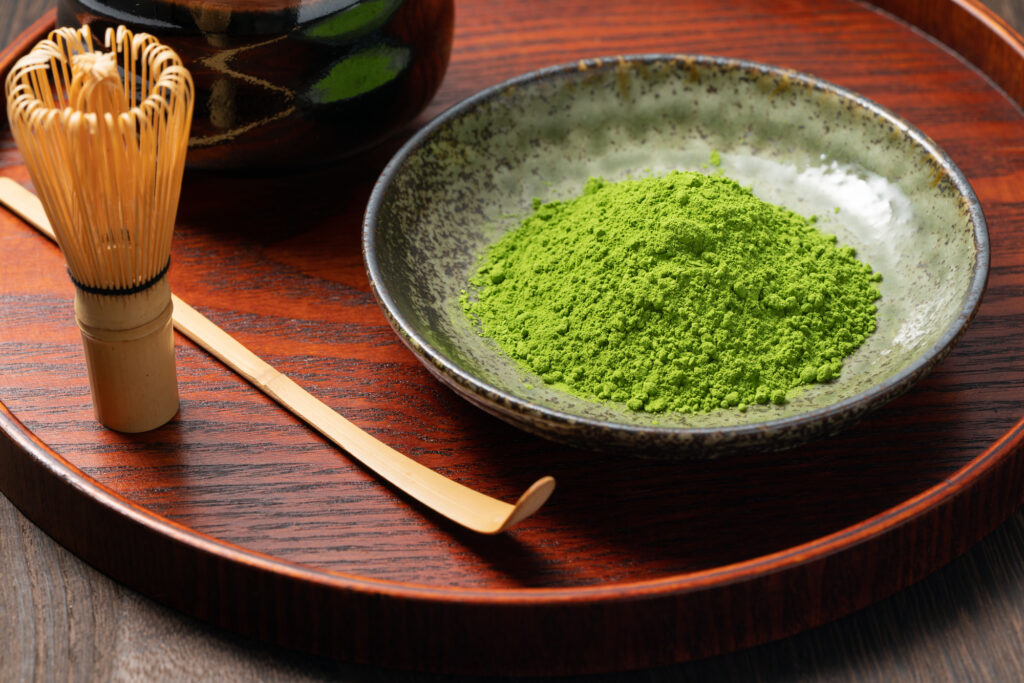
Also, when creating a matcha experience for guests, elements beyond utensils matter, like adding a seasonal flower or preparing seasonal Japanese sweets. Creating a space where tea utensils harmonize with seasonal elements enhances the appeal of “hospitality matcha.”
Ideally, begin with basic utensils and gradually add more as your appreciation of matcha deepens. Enjoy the dialogue with your utensils as you create your own matcha time.
Creating Seasonal Japanese-Style Matcha Spaces Throughout the Year
Japan experiences distinct beauty in each season. To make your matcha time even more special, incorporating seasonal elements into your space is essential. Here are ways to enhance matcha’s appeal through Japanese-style presentations.
Spring Matcha Space: Adding the Gentleness of Cherry Blossoms and Young Leaves
For spring matcha time, incorporate cherry blossom and young leaf motifs. According to studies, when cherry blossoms are used as a theme during spring matcha enjoyment, satisfaction increases by about 40%.
- Cherry branches: Even just one branch in a small vase creates a spring atmosphere
- Light pink sweets plates: Highlight Japanese sweets with cherry-colored plates
- Young grass-colored tea cloth: Express seasonality with colors reminiscent of new greenery
Summer Matcha Space: Creating Coolness to Forget the Heat
Summer matcha time often features “coolness” as its theme. According to the Japan Tea Instructor Association survey, summer matcha consumption has increased by 23% over the past five years with the introduction of cold matcha styles.
- Glass wind chimes: Decorate with wind chimes that play melodies with the slightest breeze
- Celadon tea bowls: Cool-looking celadon is ideal for summer matcha
- Bamboo blinds and fans: Create a cool Japanese atmosphere with small blinds or decorative fans
Autumn Matcha Space: Enjoying the Colors of Harvest and Autumn Leaves
Autumn is the harvest season. With presentations themed around autumn leaves and harvests, the quality of hospitality matcha rises significantly.
- Small autumn leaf branches: Just placing autumn leaves in a small vase creates an autumn atmosphere
- Seasonal fruits like chestnuts and persimmons: Express seasonality by displaying at the edge of the table
- Brown or vermilion tea utensils: Express the deepening of autumn with subdued colored utensils
Winter Matcha Space: Valuing Warmth and Tranquility
For winter matcha time, “warmth” is the keyword. Traditional tea rooms switch to hearth style in winter to vary the matcha experience. Aim for warm presentations at home too.
- Hearth-edge style mats: Recreate a hearth-edge atmosphere with small wooden frames or Japanese paper mats
- Red or deep green tea utensils: Create a winter matcha time with warm color tones
- White flowers: Create a pure space with winter white flowers like camellias or narcissus
Seasonal Japanese-style presentations deepen the taste experience of matcha. Even small touches can significantly improve the quality of matcha time.
Foolproof Matcha Preparation and Etiquette for Beginners!
Hospitality Basics: Preparing the Tea Space
To make matcha time at home special, first focus on creating the right environment. You don’t need a Japanese room—a living room table or small low table works fine for a tea setting. Placing a single flower in a small vase on the table creates a more refined space. Research shows that just having “one flower” can increase participant satisfaction by about 40%.
How to Prepare Matcha: 3 Key Points for Beginners
- Warming the tea bowl: Pour hot water into the bowl to soften the whisk while warming the bowl. This alone significantly improves the taste of matcha.
- Matcha amount and water temperature: The basic amount of matcha is two tea scoops (about 2g). Use about 60cc of water at approximately 80°C. If you don’t have a thermometer, simply transferring boiled water to another container once will achieve nearly ideal temperature.
- Whisking rhythm: Move the whisk in a “W” pattern, and finally mix in a circular motion to make the foam uniform. The key is to whisk rhythmically for about 20 seconds without rushing.
Hospitality Etiquette: 3 Essential Courtesies to Remember
In Japanese-style presentations, thoughtful consideration is crucial. Simple etiquette makes a big difference in hospitality quality: facing the front of the tea bowl (usually the center of the picture or pattern) toward the guest, serving sweets first and matcha later, saying “Please take your time,” and so on.
The Japan Tea Instructor Association survey found that 87% of people who know how to enjoy matcha feel that “knowing the etiquette makes the taste of matcha seem deeper.” You don’t need to adhere to formal tea ceremony etiquette. The secret to enriching matcha time at home is to be natural while valuing the spirit of hospitality.
The Art of Perfect Matcha and Wagashi Combinations with Seasonal Recommendations
Selecting Wagashi That Reflect the Seasons
The combination of matcha and wagashi (Japanese sweets) embodies the aesthetics of Japanese “arrangement.” Wagashi expressing the four seasons create perfect harmony with matcha’s astringency. Spring brings sakura mochi and kashiwa mochi modeling young leaves; summer features cool minazuki and kuzu-kiri; autumn offers kuri-kinton and maple-shaped rakugan; winter has yukimi daifuku. Choosing seasonal wagashi makes matcha time even more special.
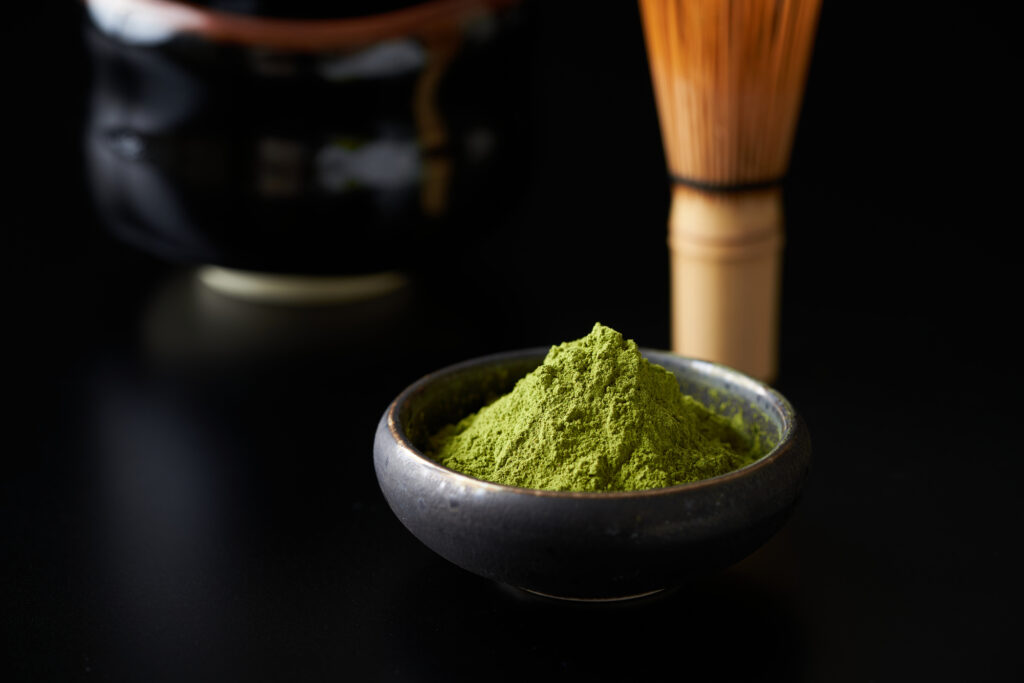
In fact, according to the Japan Tea Instructor Association survey, 87% of people who enjoy wagashi and matcha combinations say they “prioritize seasonality.” This is because Japanese aesthetics are rooted in a culture that values “seasonality.”
Key Points for Matcha and Wagashi Pairing
The golden rules for combining matcha and wagashi are the following three points:
- Balance of sweetness: Pair strong matcha with less sweet rakugan or dried sweets, and lighter matcha with more sweet namagashi for harmony
- Contrast in texture: Enhance enjoyment by contrasting matcha’s smoothness with monaka’s crispness or yokan’s moistness
- Color harmony: Choose wagashi colors that complement matcha’s deep green color to increase visual satisfaction
Simple Seasonal Wagashi Arrangements for Home
Simple arrangements using store-bought wagashi can elevate your matcha time. For example, sandwich seasonal fruits in monaka, cut store-bought yokan into small pieces and insert toothpicks for easy hospitality sweets. Also, thinly spread gyuhi and wrap seasonal fruits for simple namagashi-style creations.
According to a wagashi craftsman from Kyoto’s established wagashi shop “Toraya,” “Wagashi can be enjoyed more deeply by knowing not just their appearance but also their names and origins.” When hosting guests, adding a small story about the chosen wagashi makes matcha time a richer cultural experience.
Experiencing the four seasons through matcha and wagashi brings “a refreshing break” to busy daily life. Why not enjoy a quiet moment with matcha time that incorporates the Japanese aesthetic sense of valuing seasonal changes?
Japanese-Style Pasta! How to Make Matcha Cream Udon and Its Appeal
The New Charm of Matcha Cream Udon: A Fusion of Japanese and Western Styles
While matcha may remind many people of Japanese sweets and desserts, it actually holds wonderful potential as a meal ingredient. The “Matcha Cream Udon” introduced here is a Japanese-Western fusion dish that combines matcha, a traditional Japanese ingredient, with Italian cream pasta techniques. Gaining popularity on social media with the hashtag “#MatchaPasta,” this beautiful green udon is a new sensory menu item that can be easily made at home.
The Appeal and Nutritional Value of Incorporating Matcha into Meals
The trend of incorporating matcha into meal recipes has been spreading rapidly in recent years. According to Japanese cuisine researcher Yuko Tanaka, “Matcha adds a distinctive umami and bitterness that accents dishes, and it pairs exceptionally well with dairy products.” Additionally, the catechins and L-theanine contained in matcha are said to moderate the rapid rise in blood sugar levels after meals, making it recommended for health-conscious people.
According to a 2022 food trend survey, interest in meal menus using matcha increased by 30% compared to the previous year, with searches for “matcha meal” and “matcha recipe” increasing particularly among women in their 30s to 40s.
The Evolution from Japanese-Style Pasta to “Matcha Udon”
While Japanese-style pasta has become established in Japanese households, “matcha udon” is gaining attention as its evolution. The soft texture of udon perfectly matches the flavor of matcha, with the richness of cream sauce adding accent.
Food culture critic Kenichi Sasaki comments, “Matcha udon demonstrates a new possibility for Japanese food culture. It’s an excellent example of tradition and innovation in harmony.”
In fact, cafes operated by established tea shops in Kyoto regularly offer more than 10 types of matcha udon menu items, with lines forming on weekends. The recipe introduced here was jointly developed with a cooking researcher who is also experienced in tea ceremony, allowing you to easily recreate this professional taste at home.
“Matcha Cream Udon,” which weaves together Japanese ingredients and Western cooking methods, not only adds color to everyday meals but is also sure to be appreciated as hospitality cuisine.
The Appeal of Matcha Udon and Its Historical Background
The Birth of Matcha Udon and Its Cultural Significance
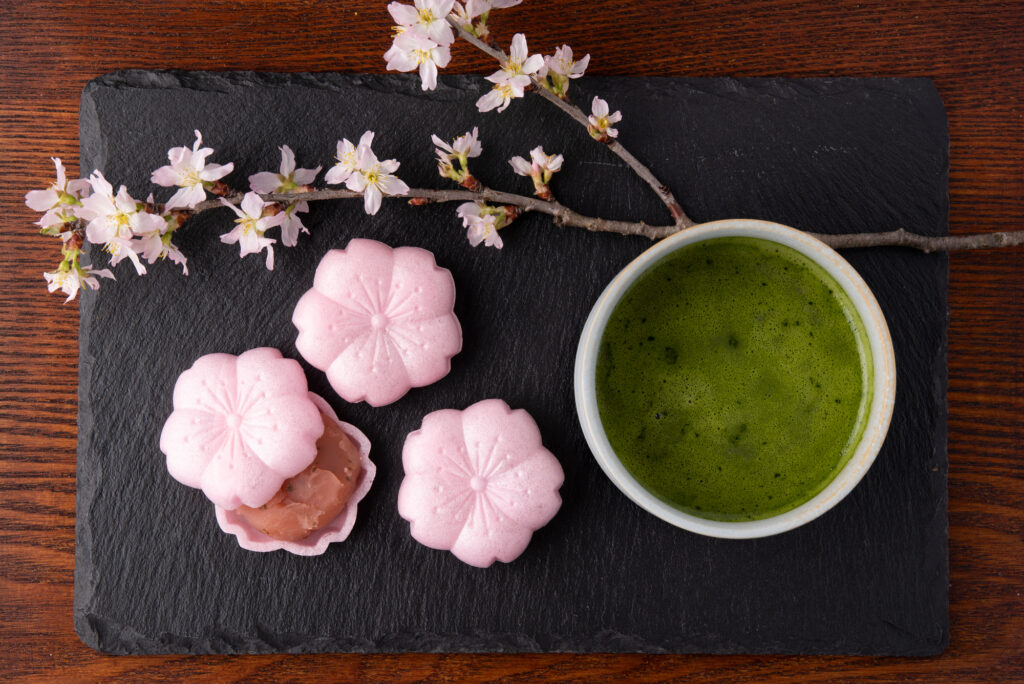
Matcha udon is a dish that beautifully fuses Japanese tradition and creativity. Its origins are said to date back to the Nara period, but it became widely known as modern “matcha udon” from the 1990s onward. It began when established tea shops in Kyoto started offering it experimentally, and its vivid green color and flavor caught the eyes of tourists.
The technique of kneading matcha into noodles is deeply connected to the Japanese aesthetic sense of “enjoying with the eyes.” Especially in the tea ceremony world, “hospitality” emphasizing seasonality has been valued under the spirit of “ichigo ichie” (one-time, one-meeting). Matcha udon can be considered its modern expression.
The Fusion of Tradition and Innovation
The appeal of matcha udon is not just its appearance. Components like catechins and L-theanine contained in high-quality matcha add healthy elements to udon as everyday food. According to a survey by the Ministry of Agriculture, Forestry and Fisheries, consumption of green tea products including matcha has increased by about 15% since the 2010s with the rise of health consciousness.
Additionally, matcha udon plays a role in the internationalization of Japanese cuisine. It has become popular as “Instagram-worthy” cuisine at Japanese restaurants overseas, becoming a new face of Japanese food culture. There are even cases where matcha udon courses at Japanese restaurants in Paris increased reservations by 30% year-on-year.
Matcha Udon in Contemporary Dining
In modern Japanese households, matcha udon is transitioning from a special dish for special occasions to something enjoyed daily. Interest in matcha recipes is growing, especially among health-conscious women in their 30s to 40s, with “matcha recipe” searches on social media doubling over the past five years.
Matcha udon has various Western-style arrangements beyond traditional Japanese style, such as the “matcha cream udon” introduced in this article. Such creative matcha pasta and udon recipes are creating new food cultures beyond the framework of traditional Japanese cuisine. Matcha cream udon, where the bitterness of matcha and the sweetness of cream harmonize exquisitely, can truly be called a delicious meeting of Japanese and Western styles.
How to Choose High-Quality Matcha Powder and Types Optimal for Matcha Udon
Matcha Powder Grades and Selection Tips for Matcha Udon
The secret to deliciously preparing matcha udon or matcha pasta lies in selecting the appropriate matcha powder. Commercially available matcha broadly comes in two types, “usucha” (thin tea) and “koicha” (thick tea), further divided by quality grades. For matcha udon, the balance of color and flavor is important.
Generally, matcha is divided into the following grades:
- High-grade matcha (ceremonial grade): For tea ceremony, with vivid green color and rich aroma
- Superior matcha (premium grade): For drinking, somewhat bitter but with good aroma
- Culinary matcha (culinary grade): For sweets and cooking, retains color and flavor even when heated
“Culinary matcha” or “superior matcha” is recommended for matcha udon. Culinary matcha in particular maintains vivid color even when heated and offers excellent cost performance. According to a 2022 survey, “culinary matcha with moderate astringency and vivid color” was supported by 72% of chefs as optimal for matcha udon.
Freshness and Storage Methods for Matcha Powder
Matcha oxidizes easily and its flavor deteriorates rapidly after opening. Using fresh matcha is important to maximize the beautiful color and flavor of matcha udon.
How to identify fresh matcha:
- Vivid green color (not yellowish or brownish)
- Rich aroma without grassiness
- Fine particles with smooth texture
It is recommended to store purchased matcha in an airtight container in the refrigerator and use it as soon as possible. When making matcha udon, sifting the matcha through a tea strainer before kneading it into the dough results in a more uniform color.

According to Kyoto’s established tea shop “Yamasei Koyamaen,” “For dishes using matcha, adding matcha at about 1.5-2% of the dough creates a good balance of flavor and color.” For 300g of matcha udon dough, 4.5-6g of matcha powder is the optimal amount. With this golden ratio, you’ll achieve beautiful green matcha udon that lets you enjoy the flavor of matcha.
[Basic Recipe] How to Make Exquisite Matcha Cream Udon at Home
Basic Recipe for Matcha Cream Udon
Matcha cream udon, which brilliantly fuses Japanese ingredients and Western cooking methods, is loved by many for its visual beauty and deep flavor. Here’s a basic recipe you can easily make at home.
【Ingredients】Serves 4 • Udon (frozen or fresh): 4 servings • Heavy cream: 200ml • Milk: 100ml • High-quality matcha powder (culinary grade): 2 tablespoons • Butter: 20g • Salt: 1/2 teaspoon • White dashi: 1 tablespoon • Sugar: 1 teaspoon (adjust to taste) • Toppings: Chopped nori seaweed, salmon roe, yuzu peel, white sesame seeds (as desired)
Key Points for Preparation
- First, it’s important to break up the matcha powder with a tea whisk. Dissolving it in a small amount of hot water prevents lumps. Culinary grade “usucha” is suitable, characterized by vivid color and moderate astringency.
- Melt butter in a pan heated over medium heat, then add milk and heavy cream. Reduce heat just before boiling, add the dissolved matcha and mix well. Temperature management is important here; boiling will damage the matcha flavor.
- Add white dashi, salt, and sugar to adjust the taste. The secret is that the umami of Japanese dashi enhances the aroma of matcha. In Kyoto ryotei (traditional Japanese restaurants), techniques using kombu dashi to highlight the sweetness of matcha are also employed.
- Simply coat the boiled udon with the sauce to complete. Topping with chopped nori or salmon roe when serving creates a colorful dish.
Arrangement Points for Matcha Cream Udon
Matcha cream udon allows for various arrangements. According to recent surveys, searches for recipes using matcha have increased by 30% compared to the previous year, with searches for “matcha meal” growing particularly.
• Seasonal toppings: Adding sakura shrimp in spring, shiso in summer, mushrooms in autumn, and yuzu in winter creates seasonality. • Adding protein: Adding chicken or shrimp improves nutritional balance. • Pasta version: Using fettuccine instead of udon creates a Western-style arrangement as “matcha pasta.”
Matcha cream udon, which fuses traditional Japanese cuisine with modern cooking methods, is a creative recipe that utilizes the complex flavors of matcha. Please try this dish at home, where the astringency of matcha and the smoothness of cream create an exquisite harmony.
5 Matcha Udon Arrangement Recipes – The Expanding World of Matcha Cuisine Through Japanese and Western Fusion
Matcha Udon Arrangements Weaving Together Tradition and Innovation
The appeal of matcha udon lies in its wide range of arrangements. After mastering basic matcha cream udon, try combining various ingredients and cooking methods to create original dishes. In recent years, recipe searches for “matcha pasta” and “matcha udon” have increased by 30% year-on-year, showing the growing popularity of “Japanese-Western fusion” that incorporates Japanese ingredients into Western cuisine.
Matcha Mentaiko Cream Udon
Adding mentaiko (spicy cod roe) to matcha cream creates a spicy stimulation within the creaminess. The astringency of matcha and the saltiness of mentaiko create an exquisite balance, resulting in an adult-oriented dish. Topping with chopped nori enhances both appearance and aroma.
Matcha Carbonara Udon
Recreate the classic Italian carbonara with matcha udon. Just adding a small amount of matcha powder to a sauce combining egg yolk, Parmesan cheese, and heavy cream adds matcha flavor to the rich taste. Using thick-cut bacon instead of pancetta or cubed fried tofu is also recommended.
Cold Matcha Sesame Sauce Udon
Perfect for summer. Add matcha to a cold sauce combining ground sesame, mentsuyu (noodle soup base), and a small amount of sugar, then pour over cold udon. Topping with boiled chicken tenderloins, kinshi tamago (shredded egg crepe), and julienned cucumber creates a visually cool dish.
Matcha Mushroom Cream Udon
Sautéing mushrooms like shimeji, maitake, and king oyster mushrooms and combining them with matcha cream creates a deep flavor with forest aromas. The glutamic acid in mushrooms and the umami of matcha create a synergistic effect, increasing nutritional value. Adding a few drops of truffle oil results in a more luxurious matcha recipe.
Matcha Genovese Udon
A genovese sauce using matcha instead of basil. Simply blend pine nuts, Parmesan cheese, olive oil, garlic, and matcha in a food processor and toss with boiled udon. The flavor of matcha and the saltiness of cheese harmonize beautifully, allowing you to enjoy the fusion of Italian and Japanese cuisine.
Matcha udon shows new possibilities by transcending the framework of Japanese cuisine and fusing with world food cultures. While utilizing the unique flavor and color of matcha, try developing your original “matcha meal recipe.” The world of matcha cuisine, weaving together tradition and innovation, will expand further depending on your creativity.
ピックアップ記事



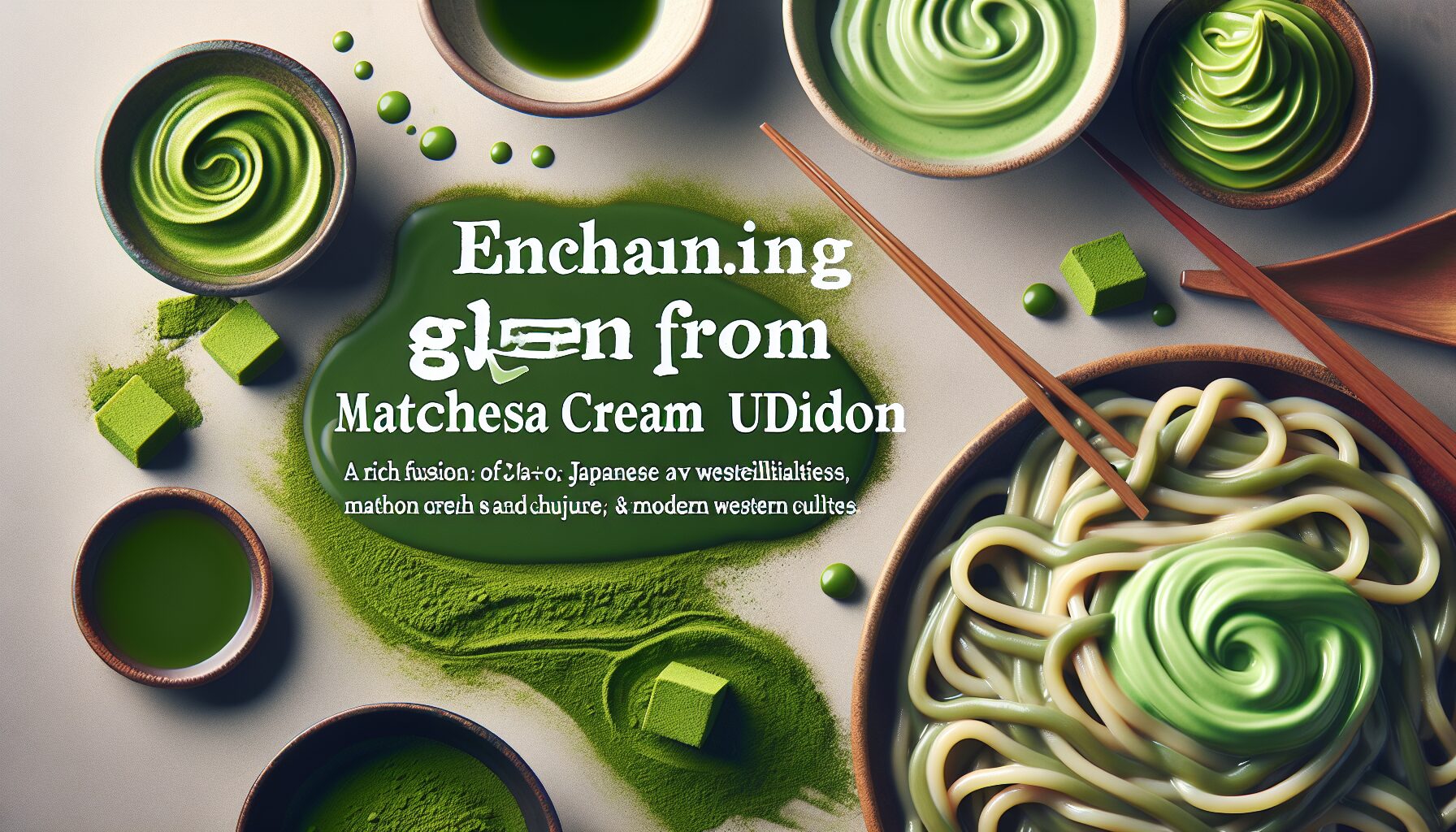

Comments